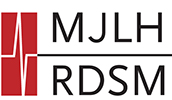Contributed by Darena Muça
On February 8, the McGill Journal of Law and Health welcomed four fantastic and engaging speakers to our 12th annual colloquium titled “Neurolaw: Combining the Science of the Brain and the Law.” Following is a brief summary of the latter two speaker’s presentations. A summary of the first two presentations is available here.

William Wannyn
William Wannyn is a member of the centre interuniversitaire de recherche sur la science et la technologie (CIRST). He holds a PhD from Université de Montréal on the topic of neurolaw. His doctoral thesis focused on the intersection of neuroscience and the law, particularly involving brain scans as evidence in criminal cases within the United States. Dr Wannyn was interested in what science had to say about traumatic brain injuries in civil cases and how neurolaw has evolved as a scholarly topic. His lecture at the Colloquium was dedicated to how the United States deals with questions of youth justice.
Studies demonstrate that there is an increase in neuroscientific evidence in courts; nevertheless, they are always used in combination with other forms of evidence, such as testimonies and psychological analyses. Neuro imaging is the least used form of evidence, with a 15% usage rate. Amongst neuroscientific technologies, fMRI is the least used, since getting experts to testify in court is expensive. Unfortunately, neuroscientific evidence has a double-edged sword effect because it can be used by the defense as a mitigating factor but can also be used by the prosecution as an aggravating factor. However, as Dr. Wannyn puts it, “what truly matters in the eye of the law is action. In other words, what people do in the eyes of law, not what their brains look like.”
Considering US Supreme Court decisions such as Roper (2005), Graham (2010) and Montgomery (2016), legal defenses for juveniles who committed criminal acts emphasize brain immaturity. Indeed, the central argument in such cases is how the brain is incapable of regulating itself and youths are prone to aroused senses, so they adopt risky behaviours. Dr Wannyn explained the historic development of how the US system deals with youth justice. The main premise is that due to their age and ongoing brain development, adolescents are biologically different from adults; thus, they should be treated differently within the criminal justice system. In the United States, youth crime and violence became politicized and gained a lot of media traction. Tough on crime legislation was adopted and young people were charged in adult courts where they were sentenced with mandatory minimums. At the end of the 1990s, academics started thinking about how to prove that youth were different than adults. Then, in the 2000s, neuroscientists gained knowledge about adolescent brains increased connectivity and tremendous change, which confirmed that the adolescent brain is still growing biologically. Since the brain is malleable, they argued, youth sentences should involve rehabilitation instead of harsh punishment.
However, these discoveries about adolescent brains leave many questions unanswered when it comes to the law. For example, what does it mean to say that on average the adolescent brain is different than that of adults? What is an average adolescent, let alone what is an average brain and what does it look like? While brain imaging can show us the larger trends in brain development, we are still far from being able to use an individual brain scan to determine the exact maturity level of an adolescent offender’s brain.
Daniel Ambrosini
Daniel Ambrosini was the founding Co-Editor-in-Chief of the McGill Journal of Law and Health. He teaches at McMaster University in the Department of Psychiatry and Behavioural Neurosciences. Moreover, he serves as legal counsel in the Forensic Psychiatry Program at St. Joseph’s Healthcare Hamilton.
Dr Ambrosini’s lecture during the Colloquium focused on the different states of mind within the penal code, and what role neurolaw plays as evidence in distinguishing states of mind. To start, he explained the four states of mind in the US model penal code (PRKN): Purposeful, Recklessness, Knowledgeable, Negligent. Under Canadian Law, state of mind is referred to in section 16 of the Criminal Code, as well as section 4(1) of the Health Care Consent Act. Moreover, the Montreal Cognitive Assessment scale (MoCA) assesses mental states of peoples. Scores from this psychometric test range from zero to 30; where extremely low numbers signal mental impairment.
Dr Ambrosini then referenced a study from 2017, which found that brain scans can reveal different areas of brain activity, specifically the knowledge and recklessness categories. However, he asked, what happens when you reveal brain scans to judges, and how can this evidence be admissible in court? In the United States, for instance, the Frye Test determines the admissibility of scientific evidence. Essentially, such evidence must be relevant and verifiable. In Canada, the Mohan Test establishes the admissibility of expert evidence, based on four criteria. The evidence must be relevant, necessary in assisting the facts, not fall under any exclusionary rule and given by a properly qualified expert. This raises questions regarding the role of finder of fact. What is the purpose of scientific evidence, and has the evidence encroached on the domain of the finder of fact? In other words, the inclusion of these highly technical brain scans in evidence raises the question of what weight scientific evidence has from a legal perspective.
Overall, when neuroscientific evidence is being introduced, its application has different purposes; consequently different questions should be asked based on the purpose of such evidence. Dr Ambrosini shares seven criteria which help us understand the fundamental issue of the purpose of scientific evidence: he asks whether such evidence is used to “butter”, to detect, to sort through, to challenge an assumption, to intervene, to explain or to predict.

